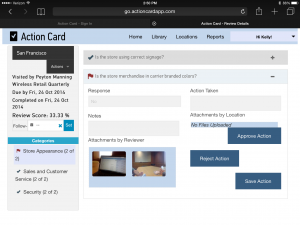Three Ways to Get Brand Standards Consistency at the Location Level
I used to teach 6th grade and learned very quickly that the only way to be effective in the classroom was to have control of the class. The way to maintain control was by having clear standards and the discipline to enforce them consistently and equitably. Kids will test your boundaries, like adults and tend to follow through on the rules when they know it matters. Once I got into this rhythm, having to actually discipline kids took less and less time and we were able to focus on the lessons. I learned that If I didn’t carry out my own policy, my policy quickly became meaningless. As an adult, I focus on things in my life that matter to me and my family. I don’t blame kids for trying to learn where to put their attention. We do it too.
In business, regardless of your industry, you have certain standards and best practices that have lead to success and growth. When you deviate from this model, you do so at your own peril. The challenge that many businesses have is pushing these standards across a network where diverse personalities, geographical distance and lack of oversight can lead to shortcuts and forgetting. In the Wireless Retail and Franchise industries, this is especially common. Tight standards from merchandising, customer service, uniforms, marketing, pricing and operations ensure that brands are instantly recognizable regardless of where you encounter them. Managers spend a good amount of time reinforcing these standards, teaching and coaching them and identifying where improvement can be had. This is tough business, especially in the field. This is where we saw the opportunity for Action Card. However, like any good system, our mobile location review app is only effective if it is being used. Here are some tips to ensure that your people at every level are engaged in your standards and using Action Card to maintain them.
Collaboration
If you want your people to comply with your standards, make sure they are part of them. Your employees (if you hired well) should be the personification of your culture and mission. Involve them in the process of driving your standards. Incorporate their ideas when you can, recognize the people who truly represent what you are trying to do in their work and provide the resources your people need to improve and meet the standards you’re driving. Action Card has a document library for this purpose. It also allows store managers and franchisees the user access to see their reviews, reconcile “action items” and easily track their to-do lists. Since this is a cloud based tool, your management teams can track this happening and your location managers know that people can see the status of their action items. This is a nice marriage of collaboration and compliance.
Centralized Data
You can also get people dialed into your standards by selling them on the “why.” Having data readily available that reinforces your compliance standards helps take the emotion out of enforcement. Action Card aggregates your review data and allows you to see how you perform comparatively on your site reviews as a company, by region, location and even down to the standards themselves. When you can correlate high performing locations with high review scores, it makes a compelling case to follow the tactics that make up your standards.

Reconciliation
When our clients use Action Card to do their site visit reviews, they flag certain checklist items that require attention from the franchisee or store manager. Those items appear on the home screen of that person when they log in and stays there until they update and reconcile the items. They also get e-mail reminders. But the real accountability comes in when they do fix those items. They then appear on your regional field manager’s screen and need to be approved or rejected. So there is never uncertainty about the status and both your field manager and your franchisee or store manager know that all of this is visible in real time at the highest levels of your organization. So, like teaching, if you’ve communicated the expectation and always watch to make sure that the expectations is being met, it will be met. When you stop following up, the accountability disappears.

